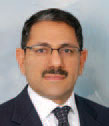
Dear Reader,
Once not so long ago there was a general fear of technology. Now the fear revolves around getting the right technology, especially where financial systems are concerned. The field has expanded to the point where banks are increasingly concerned about buying what is fit for purpose.
In this issue we look at the pressures behind choosing the right systems to handle treasury, trade finance and cash management transactions.
It’s a complex and expensive pursuit that today’s banks are confronted with as they seek to keep pace with the expectations of a customer base that has come to regard efficient and user friendly electronic technology as routine.
So getting things right and ensuring that it is reliable are key. There is also the added strain of ensuring, where possible, that the systems chosen can inter-connect smoothly with those of major business customers.
Among the difficult decisions that banks face as they upgrade their systems is the question of how far to develop technology in-house, tailored to their specific needs and internal business culture, and how far to rely on off-the-shelf technology purchased from outside specialist providers.
Competition is so intense that many banks feel they cannot rely solely on their own technological capacities. But, even as they strive to keep up with the best industry standards, they also want to make the most of their individual strengths and ensure the best possible fit with their existing internal operations.
Banking systems are also in the spotlight in another article, which claims that data collated regarding customers’ businesses and preferences could be used innovatively to sell additional services and/or to cross-sell between customers.
In short, its premise is that banks’ “real wealth” is now information, which could be used to make extra money as well as providing further customer benefits.
The writer looks at what has been termed “the big data phenomenon”, commenting that “the exploding volume, velocity and variety of data are having real business implications across domains as diverse as healthcare, manufacturing, retail, and banking”.
He then asks, “But what about big data in trade? How can it be accessed and utilised by banks to drive profitability and deliver a better customer experience?”
Traditionally, bankers involved in trade have done very well at tracking corporate customer activity. In fact, transaction bankers’ longstanding practice of understanding and examining their customers’ business has given them a wealth of information “that is the essence of the big data movement”.
For example, banks have the data to know if their customers are buying domestically or internationally because of the transactions pumped through trade, FX and payments.
However, says the article, “the challenge at the heart of big data projects is cost-effectively processing that data to drive enhanced insights and decision making to the benefit of customers. Banks, unfortunately, have tended to lag in the utilisation of the ‘real wealth’ they hold, which is not cash but data. But there are many significant uses to which it can be put.”
The economic future for MENA is looking bright as increased government spending is helping drive up both GDP growth and regional trade. In this issue, we look at the factors behind this momentum.
One of the most important is the outlay on a range of projects in areas such as infrastructure, coupled with new social programmes.
“There have been a number of significant investment projects in major economies in the Middle East and this will continue in the coming years,” said one treasury services chief. “Governments have increased their expenditure to drive growth, and the price of oil has continued to support this.“
“On top of this,” he added, “many governments have also accumulated significant reserves in past years, which they can now use to support spending.”
 Cash And Trade Magazine For Cash and Trade professionals in the Middle East
Cash And Trade Magazine For Cash and Trade professionals in the Middle East




